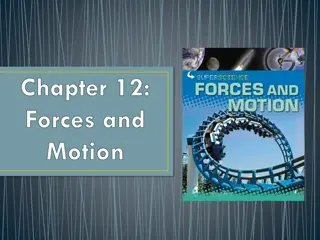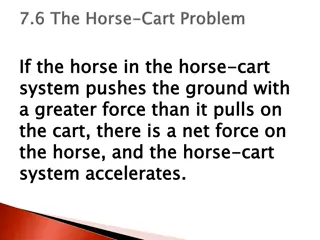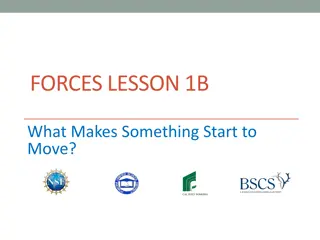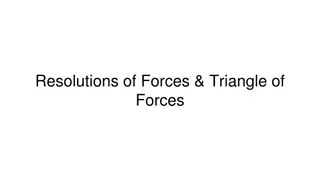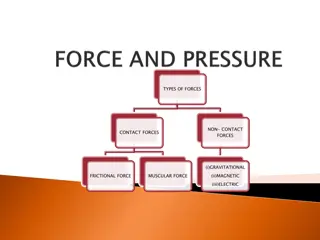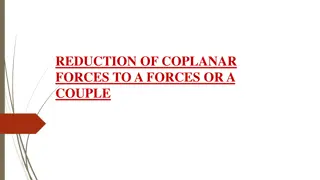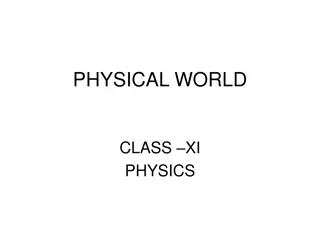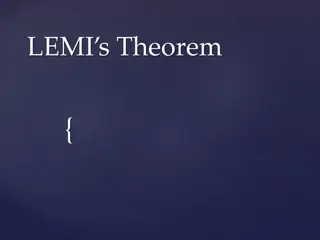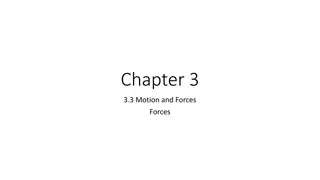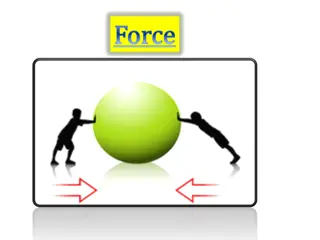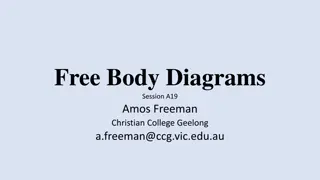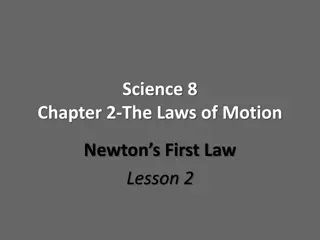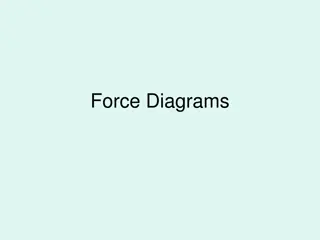Forces: A Fundamental Understanding
Forces are essential in understanding the motion of objects. This content covers the definition of force, weight, tension, friction, air resistance, and normal reaction force. Examples illustrate how forces act in different scenarios, such as on inclined slopes, pendulum motions, and towing situations. Understanding these fundamental concepts is crucial in physics and mechanics.
Download Presentation

Please find below an Image/Link to download the presentation.
The content on the website is provided AS IS for your information and personal use only. It may not be sold, licensed, or shared on other websites without obtaining consent from the author.If you encounter any issues during the download, it is possible that the publisher has removed the file from their server.
You are allowed to download the files provided on this website for personal or commercial use, subject to the condition that they are used lawfully. All files are the property of their respective owners.
The content on the website is provided AS IS for your information and personal use only. It may not be sold, licensed, or shared on other websites without obtaining consent from the author.
E N D
Presentation Transcript
What is a force? A force is an influence on a system or object which, acting alone, will cause the motion of the system or object to change. If a system or object at rest is subjected to a non-zero force it will start to move.
Weight Weight is a force caused (on Earth) by the gravitational attraction of a mass to the Earth s centre. The weight of a body, of mass m, is defined to be the force, W, with which it is attracted to the Earth. On Earth, W = mg, where g is the acceleration due to gravity (g 9.81 m s 2 on Earth).
Tension Many mechanics problems involve objects being pulled, pushed or suspended from a string, spring, rod or something similar. The force that the string (or similar) exerts on the object in these types of problems is called tension.
Friction A force that prevents, or tries to prevent, the slipping or sliding of two surfaces in contact.
Air Resistance Acts in the opposite direction to the motion.
Normal reaction force A mass lies on a horizontal surface. The weight of the mass pulls it downwards. The reason it does not fall is because the horizontal surface exerts an equal and opposite force on the mass called the normal reaction force. The normal reaction force always acts perpendicularly to the surface that is causing it.
Example A block lies at rest (not moving) on a rough inclined slope; what forces act on the block?
Example A ball, attached to the ceiling, is swinging on the end of a string in a simple pendulum motion; modelling the ball as a particle, what forces act on it?
Example What forces act on a trailer attached to a tow rope being pulled by a car?


